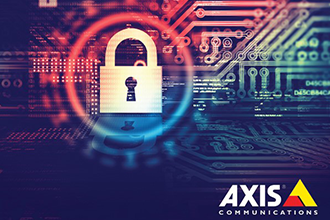Over the next five years, the cloud solutions market is projected to increase by almost 400%. Video cloud solutions are becoming more and more attractive to customers, as they’re flexible, scalable, cost effective and simple to maintain.
Unfortunately, cloud solutions increase the surface area of a possible attack, so concerns of data protection and security are common. Some customers are hesitant about sending their data to a cloud application, but malware can also come from the cloud solution to the local site. How can you ease your customers’ concerns, especially if a video cloud solution would be a good fit for them? Over the next five years, the cloud solutions market is projected to increase by almost 400%.¹ Video cloud solutions are becoming more and more attractive to customers, as they’re flexible, scalable, cost effective and simple to maintain.
Unfortunately, cloud solutions increase the surface area of a possible attack, so concerns of data protection and security are common. Some customers are hesitant about sending their data to a cloud application, but malware can also come from the cloud solution to the local site. How can you ease your customers’ concerns, especially if a video cloud solution would be a good fit for them?
Although nothing on a network is 100% secure, the good news is that some video cloud solutions are more secure than others. Here are three helpful questions to keep in mind when choosing a video cloud solution to offer your customers.
How often is the video cloud solution scanning and updating?
Good cloud applications constantly scan and automatically update services on their infrastructure. Scans mitigate possible vulnerabilities by finding abnormalities or strange patterns. It’s important to know the scanning methods of a cloud solution provider, as they can provide additional peace of mind. Some providers even use Common Vulnerability and Exposures (CVE), a dictionary of publicly known information security vulnerabilities and exposures to stay up to date.
Where is the video cloud solution encrypted?
Encryption is essential in both transit and storage. To prevent middle man attacks and to ensure data is going to the correct destination, data encryption during transit is a must. Data encryption in storage, on the other hand, is usually common in a cloud environment, but some might not think to implement the same storage policy for the local site. In a rare occasion where the data pipe to the cloud is down, local protection provides that extra layer of security.
Are mitigation controls consistent across your providers?
While all cloud providers have similar mitigation controls, their implementation varies. It’s important to ensure policies and controls of a video cloud solution match those of the local site, as compatible solutions provide added security. In addition, an Information Security team may have to learn how to manage mitigation controls across various cloud providers.
Now that you’re ready to offer a secure video cloud solution, there’s one more critical step – good cyber hygiene on the local site. In 2018, 47% of businesses with a data breach reported that human error was the main cause.² If not already in place, your customers should establish best practices regarding passwords, hardening devices, certificates and more for maximum cybersecurity.
Looking to offer your customers a secure video cloud solution? AXIS Guardian is a cloud-based video surveillance solution, entirely hosted and managed by Axis Communications. Learn more by visiting www.axis-communications.com/esa/guardian/1905.
¹Reports, Wise Guy. “Global Cloud Computing Market Growth (Status and Outlook) 2019-2024.” 2019.
²Ipsos. “2018 Security Tracker Study.” 2018.




